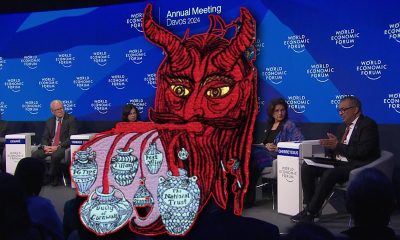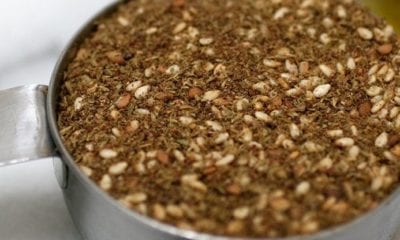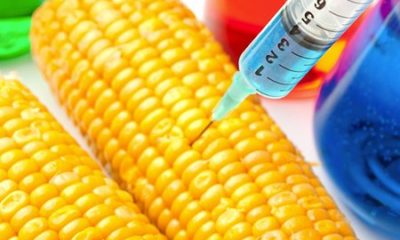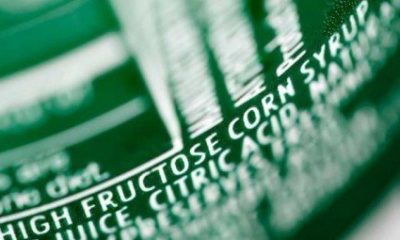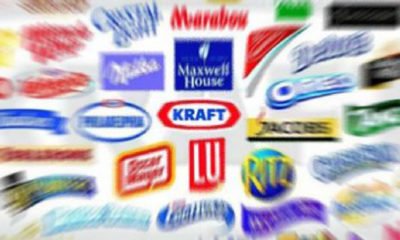Latest News
The World Health Organization is Taking Cash Handouts from Junk Food Giants
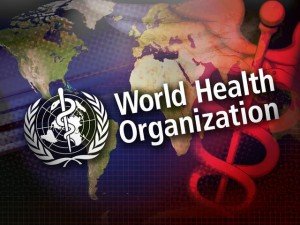

The World Health Organization (WHO) is the United Nation’s “public health” arm and has 194 member states. While its official mission is “the attainment by all people of the highest possible level of health“, it is also clear that it works according to a specific agenda, one that laid out by the world elite and the organizations that are part of it. In the article entitled ‘Contagion’ or How Disaster Movies “Educate” the Masses, we’ve seen how the WHO was involved in the promotion of mass vaccination campaigns following (bogus) disease scares, of civilian camps, of the bar-coding of individuals and so forth.
More proof of the WHO’s “elite bias” has been recently uncovered by a study: The organization has been taking hundreds of thousands of dollars from the world’s biggest pushers of unhealthy foods such as Coca-Cola, Nestlé and Unilever. It is relying on these companies for advice on how to fight obesity..é which is the equivalent of asking a drug dealer for advice on how stay off drugs and NOT buy his product.
Coca-Cola, Nestlé and Unilever are not simply “food companies, they are gigantic conglomerates that produce and distribute an enormous proportion of processed foods across the world. In the article entitled Irrational Consumerism (or The Few Companies Who Feed the World), I described how only a few mega-conglomerates own most of the world’s brands of processed foods. To refresh your memory here are some of the brands owned by Nestlé:
Cereals
Cinnamon Toast Crunch
Cheerios (outside US, Canada and Australia)
Cini Minis
Honey Nut Cheerios (outside US, Canada and Australia)
Oat Cheerios
Cookie Crisp
Golden Grahams
Honey Stars
Koko Krunch
Milo Cereals
Nestlé Corn Flakes
Nesquik
Shreddies
Shredded Wheat
Clusters
TrixYogurt
Munch Bunch
SkiCoffee
Bonka
Nescafé
Nespresso
Partner’s Blend
Ricoffy
Ristretto
Ricoré
Sical
Tofa
Taster’s Choice
Zoégas
ShrameetWater
Aberfoyle
Aqua D’Or
Aqua Pod
Acqua Panna
Al Manhal
Aquapod
Arrowhead
Buxton
Contrex
Deer Park
Hépar
Ice Mountain
Henniez
Korpi
Levissima
Nestlé Aquarel
Nestlé Vera
Ozarka
Perrier
Poland Spring
Powwow
Minere
Pure Life/Pureza Vital
Quézac
San Pellegrino
San Bernardo
Viladrau
Vittel
ZephyrhillsOther drinks
Nestea (Joint venture with Coca-Cola, Beverage Partners Worldwide)
Enviga (Joint venture with Coca-Cola, Beverage Partners Worldwide)
Milo
Carnation
Caro
Nesquik
Libby’s
Growers Direct Organic Fruit Juices
Good Host
Juicy Juice
Ski up and goShelf-stable products
Bear Brand
Carnation
Christie
Coffee-Mate
Dancow
Gloria
Klim
La Lechera
Milkmaid
Nespray
Nestlé
Nesvita
Nestlé Omega Plus
Nido
Ninho
Svelty
Emswiss
MiloIce cream
Camy
Dreyer’s
Edy’s
Frisco
Häagen-Dazs (North America and the United Kingdom)
Hjem-IS (Denmark & Norway)
Maxibon
Motta
Mivvi
Nestlé
Nestlé Drumstick
Oreo (Canada)
Peters (Australia)
Push-Up
Schöller
Skinny CowInfant foods
Alete
Alfare
Beba
Cérélac
FM 85
Gerber (the world’s largest baby food company)
Good Start
Guigoz
Lactogen
Nan
NAN HA
NanSoy
Neslac
Nestlé
Nestogen
Nido
PreNanPerformance nutrition
Musashi
Neston
Nesvita
PowerBar
Pria
SupligenHealthcare/nutrition
Boost
Carnation Instant Breakfast
Nutren
Peptamen
Glytrol
Crucial
Impact
Isosource
Fibersource
Diabetisource
Compleat
Optifast
ResourceSeasonings
Buitoni
Maggi
Carpathia
CHEF
Thomy
WiniaryFrozen foods
Stouffer’s
Lean Cuisine
Buitoni
Hot Pockets
Lean Pockets
Papa Guiseppi
Tombstone Pizza
Jack’s Pizza
DiGiorno Pizza
California Pizza Kitchen FrozenChocolate, confectioneries and baked goods
100 Grand Bar
Aero
After Eight
Allens
Animal Bar
Baby Ruth
Bertie Beetle (Australia)
Big Turk (Canada)
Black Magic
Boci (Hungary)
Blue Riband
Bono(Brazil)
Breakaway
Butterfinger
Butterfinger BB’s
Butterfinger Crisp
Bon Pari (Czech Republic, Poland and Hungary)
Cailler
Caramac
Carlos V
Chips Ahoy! (Canada)
Coffee Crisp
Chunky
Drifter
Frigor
Galak/Milkybar
Goobers
Heaven
Hercules Bars (with Disney)
Icebreakers
Kit Kat (Hershey’s in the US)
Lion
Matchmakers
Milky Bar
Mirage
Joff
Munchies
Nestlé Alpine White
Nestlé with Almonds
Nestlé Crunch
Nestlé Crunch Crisp
Nestlé Crunch with Caramel
Nestlé Crunch with Peanuts
Nestlé Crunch Pieces
Nestlé Crunch White
Nestlé Milk Chocolate
Nestlé Princessa
Nestlé Wonder Ball
Nips
Nuts (Europe)
Oh Henry (except US)
Peppermint Crisp
Perugina Baci
Polo
Quality Street
Raisinets
Rolo (Hershey’s in the US)
RowntreesFruit Pastilles
Jelly Tots
Pick & Mix
Randoms
Fruit Gums
Tooty Frooties
Juicy Jellies
SnowcapsSmarties
Texan Bar
Toffee Crisp
Toll House cookies
Turtles
Walnut Whip
Violet Crumble
Yorkie
XXX mintsPetcare
Alpo
Beneful
Cat Chow
Dog Chow
Fancy Feast
Felix
Friskies
Go Cat
Butchers
Bakers
Winalot
Gourmet
Mighty Dog
Mon Petit
ONE
Pro Plan
Purina
Tidy Cats
Along with Nestlé, Unilever is one of the world’s largest conglomerates in the world, with a yearly revenue of 60 Billion dollars. Yes, Billion. One billion is a thousand times one million. While Unilever owns a great number of brands selling personal care products, it is also the world’s largest maker of ice cream, with brands such as Popsicle, Klondike, Ocean Spray ice cream, Slim Fast ice cream, Breyers, Starbucks and Ben & Jerry’s. Here’s a list of other foods and beverages produced by Unilver.
Ades or Adez — soya-based drinks
Alsa — desserts and syrups
Amora — French mayonnaise and dressings
Amino — dehydrated soup (Poland)
Annapurna — salt and wheat flour (India)
Becel — also known as Flora/Promise; health-aware: margarine, spreads, cooking oil, milk, fermented milk
Ben & Jerry’s — ice cream
Best Foods — mayonnaise, sandwich spreads, peanut butter and salad dressings
BiFi — sausage-based snacks (The Netherlands — Germany)
Blue Band — family-aware: margarine, bread, cream alternatives
Bovril — beef extract
Breyers — ice cream
Brooke Bond — tea
Bru — instant coffee (India)
Brummel & Brown — margarine
Bushells — tea (Australia, New Zealand)
Calvé — sauces, ketchup, mustard, mayonnaise, peanut butter
Chicken Tonight — Wet sauces range (excl UK & IE)
Choysa — tea, marketed mainly in Australia and New Zealand
Conimex — Asian spices (Netherlands)
Colman’s — mustard,condiments, packet sauces & OK Fruity Sauce
Continental — side dishes
Country Crock — margarine
Darko (Дарко) — ice cream (Bulgaria)
Delma — margarine (Poland)
Du Darfst (Germany)
Elmlea — Pourable artificial cream available in different varieties (UK)
Fanacoa — Mayonnaise, mustard, ketchup (Argentina and for export to Latin America)
Flora — margarine, light butter, jams
Fruco — ketchup, mayonnaise and condiments
Fudgsicle
Heartbrand — ice cream (umbrella logo)
Hellmann’s — mayonnaise
I Can’t Believe It’s Not Butter — margarine spread
Imperial Margarine — margarine
Jif Lemon & Lime Juice
Kasia — margarine (Poland)
Kecap Bango — soya sauce in Indonesia
Kissan — Ketchups Squashes and Jams (India and Pakistan)
Klondike — Ice cream sandwiches
Knorr (Knorr-Suiza in Argentina) — sauces, stock cubes, ready-meals, meal kits, ready-soups, frozen food range
Lady’s Choice — mayonnaise, peanut butter and sandwich spreads (Philippines, Malaysia)
Lan-Choo — tea (Australia/New Zealand)Lao Cai Seasoning
Lipton — tea
Lyons — tea
Lipton Ice Tea — ready-to-drink tea (partnership with PepsiCo)
Lizano Sauce (Salsa Lizano) — Costa Rican condiment
Lyons’ — tea (Ireland)
Maille — French mustard
Maizena — corn starch
Marmite — yeast extract spread (except in Australia and New Zealand, called Our Mate)
McCollins — tea (Peru)
Mrs. Filbert’s — margarine (USA)
Paddle pop — Ice cream (Australia, Indonesia, Malaysia [incorporated with Wall’s])
Pfanni — Bavarian potato mixes
Peperami — Sausage snacks
PG Tips — tea (UK)
Phase — cooking oil
Planta — margarine
Popsicle — Frozen treats
Pot Noodle — cup noodles
Promise — Becel/Flora
Ragú — pasta sauces (Exl. UK & IE)
Rama — margarine
Royal — pastas (Philippines)
Royco — stock cubes, non-MSG stock (only in Indonesia)
Red Rose Tea — tea (Canada)
Sana — Margarine (Turkey)
Saga — tea (Poland)
Sariwangi — tea (Indonesia)
Scottish Blend — tea
Skippy — peanut butter
Slim•Fast — diet products
Slotts — mustard (Sweden)
Sunce (Sun) — Mayonnaise (Serbia, Macedonia, Bosnia and Herzegovina, Montenegro) brand now discontinued, Sunce factory now produces Uniliver brand Knor Mayonnaise
Stork margarine
Streets (ice cream) (Australia/New Zealand)
Tortex — ketchup (Poland)
Turun sinappi — mustard (Finland/Sweden)
Unilever Food Solutions — professional markets (food service)
Unox — soups, smoked sausages
Vaqueiro — cooking margarine, cooking oil
Wall’s ice cream
Wheel (detergent)
Wish-Bone salad dressing
The brands owned by Coca-Cola are too numerous to list but you might already know that the company has a stronghold on sugary drinks across the world, whether we look at soft-drinks, juices or energy drinks.
The owners of these companies are not only businessmen but participants in elite forums such as the Council on Foreign Relations and the Bilderberg group. They have a say in the forming of social and economic policies across the world.
With funding coming directly from these conglomerates, we have another proof that the WHO is not truly attempting to make the world a healthier place. It is rather shaping the world’s health according to the interests and the Agenda of the world elite. Do you really need an international organization to help you stay healthy? Simply staying of the toxic foods sold by those who fund the WHO is an incredibly good start.
Here’s an article on the WHO receiving money from major junk-food distributors.
World Health Organisation ‘taking cash handouts from Coca-Cola to plug black holes in budget’
- The Pan American office has accepted $50,000 from Coca-Cola, $150,000 from Nestle and $150,000 from Unilever
- It has also been relying on the food and beverage industry for advice on how to fight obesity
The World Health Organisation has taken thousands of pounds from food companies such as Coca-Cola and Nestle.
A regional WHO office has also taken donations from Ben & Jerry’s ice cream and Unilever, according to a study.
The Pan American office – known as PAHO – has received £35,000 in donations from Coca-Cola, £100,000 from Nestle and a similar amount from Unilever.
The WHO is the public health arm of the UN and fights chronic ailments such as diabetes and heart disease, caused primarily by unhealthy diets.
The Pan American Health Organisation has also been relying on the food and beverage industry for advice on how to fight obesity.
Accepting industry funding goes against WHO’s worldwide policies.
The Pan American office – known as PAHO, based in Washington – has so far accepted $50,000 from Coca-Cola, the world’s largest beverage company, $150,000 from Nestle, the world’s largest food company, and $150,000 from Unilever, whose brands include Ben & Jerry’s ice cream and Popsicles.
The cash donations were described by Irene Klinger, a senior adviser for partnerships in PAHO, as ‘a new way of doing business.’ However, she insisted WHO is careful to maintain control of its policy decisions.
WHO is increasingly relying on ‘partnerships’ with the industry, instead of maintaining neutrality like it always has done, to fill holes in its budget. However, it still refuses to partner with the tobacco industry.
Since 2010 WHO has cut its own funding for chronic disease programs by 20 per cent. These diseases cause 63 per cent of premature deaths worldwide, but the WHO department in charge of fighting them receives just six percent of the UN’s budget.
Boyd Swinburn, an Australian professor and longtime member of WHO’s nutrition advisory committees, said: ‘WHO is getting hijacked. They’re cash-strapped, and they’re bringing the private sector in. That’s very dangerous.’
However, Jorge Casimiro, Coca-Cola’s director of international government relations and public affairs, said: ‘It’s about the convergence of the interests. What we’re trying to say is we’re ready to take action. We’re companies who want to do this. We’re ready to go.’
Meanwhile, Coca-Cola has also placed a top official on the steering board for WHO’s Pan American Forum for Action on Non-Communicable Diseases, a group that helps determine how WHO fights obesity in Mexico.
WHO’s Geneva headquarters and five other regional offices have been stopped from accepting money from the food and soda industries, among others.
Spokesman Gregory Härtl said: ‘If such conflicts of interest were perceived to exist, or actually existed, this would jeopardize WHO’s ability to set globally recognized and respected standards and guidelines.’
It has also emerged that at least two of specially appointed nutrition advisers working on behalf of WHO had direct financial ties to the food industry.
Murray Skeaff, a New Zealand professor, received research money from Unilever, the conglomerate with $60 billion sales last year.
Esté Vorster, a South African professor, advised a sugar association and took travel and ‘after hours’ money to judge a contest for Nestle. Vorster said she does not participate in discussing the sugar guideline.
– Source: Daily Mail
- LA Fire Attack Map is identical to the LA Smart City Rail Map
- Birds of a feather flock together …
- Etsy and pizza subliminal
- Dwayne "The Rock" Johnson for Vanity Fair (circa November 2021)
- Sade 2010
- UK Plan to 'UNLEASH AI'
- TikTok video shows links to Elon's "everything" app and the mark of the beast system.
Get an e-mail notification as soon as a new article is published on The Vigilant Citizen.
-

 Movies and TV2 months ago
Movies and TV2 months agoAdrenochrome and Ritual Humiliation: The True Meaning of the Movie “The Substance”
-

 Pics of the Month3 months ago
Pics of the Month3 months agoSymbolic Pics of the Month 10/24
-

 Latest News2 months ago
Latest News2 months agoKamala’s Campaign Was Objectively the Worst in Recent History
-

 Pics of the Month1 month ago
Pics of the Month1 month agoSymbolic Pics of the Month 12/24
-

 Latest News2 months ago
Latest News2 months agoWas the Jake Paul vs Mike Tyson Fight a Humiliation Ritual?
-

 Latest News3 months ago
Latest News3 months agoAn “Urban Opera” in Toulouse Using Massive Machines is Denounced as a Satanic Ritual
-

 Movies and TV1 month ago
Movies and TV1 month agoThe Hidden Meaning of “Smile 2”: It’s About Monarch Mind Control
-

 Latest News1 month ago
Latest News1 month agoIt Was Bound to Happen: Jay-Z Accused of Abusing a 13-Year-Old Girl


